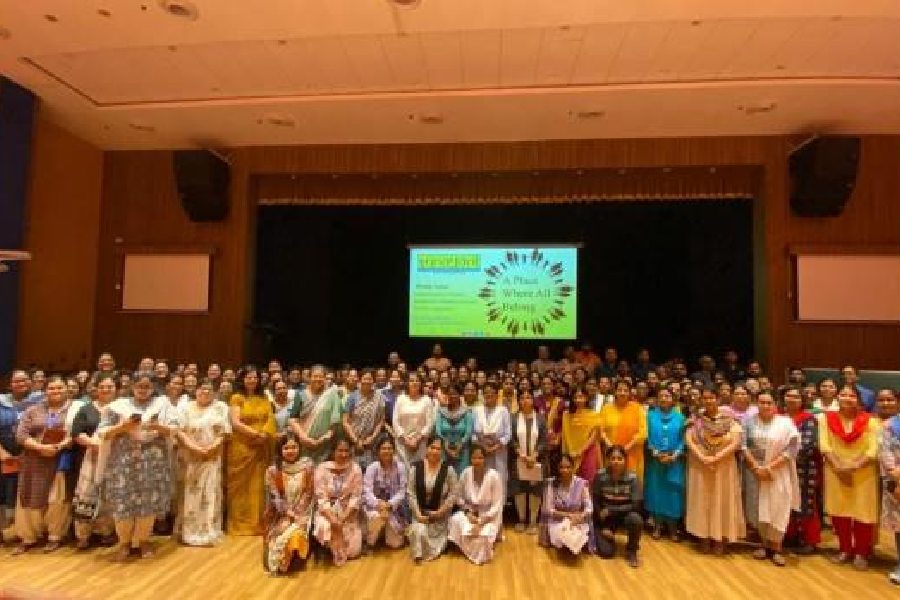A school recently conducted a sensitisation programme for teachers to help them better handle children with disabilities, the etiquette to be followed while interacting with the children and the language to use so the teachers do not sound dismissive or overtly kind.
Such sensitisation became necessary because of the “growing number of applications” from parents of children with special needs that the school receives every year, said the director of Indus Valley World School.
Over 100 teachers, involved in teaching students of various classes, took part in the session.
A number of teachers were found lacking in skills in dealing with children with disabilities, said a participant. Many did not appear equipped to handle situations or interact with individuals with disabilities, a challenge not specific to one school.
A teacher was asked how she would step up to help a person with visual impairment who is trying to cross a road.
The teacher showed that she would link her arms with the person with visual impairment. The action, though well-intentioned, could be objectionable to the person with visual impairment, she was told.
In another instance, while referring to children with disabilities, a teacher used the word “these people”, which the resource person pointed out “othered” the student with disability.
Disability campaigner and trainer Ritika Sahni, who conducted the session, said one should ask before offering help, instead of presuming incapability.
“The etiquette requires one to ask how or whether one should help because in their earnestness to help, one might end up doing the opposite of what is required,” said Sahni, founder of Trinayani, an organisation that creates awareness about disability.
Teachers have to shed the baggage of prejudices and stereotypes that they have grown up with when they walk into a classroom and learn to respond to the diverse learning needs of a child.
“Discrimination or exclusion happens not intentionally but because of lack of information and ignorance,” said Sahni.
A sensitisation programme would make teachers aware of the correct norms of behaviour with a child with a disability, said Amita Prasad, director of Indus Valley World School.
“Some teachers have an aversion towards handling children with disabilities and they need to be sensitised. Just as a careless remark can be cruel to a child with a disability, over-zealousness to help can be discriminating as well,” said Prasad.
“The number of applications we receive from children with disabilities has grown tremendously over the years. It shows that the incidence of disability is high and teachers need to be sensitised about them. Parents either come with a confirmed report of a child with disability or instances where they do not declare, but the school understands the disability when teachers interact with the child,” said Prasad.
Prasad also said there was a need to understand that there are different kinds of disabilities, visible as well as invisible, instead of putting all of them in one category.
The teachers have to be equipped to handle children will all types of disabilities and parents of children without disabilities need to be sensitised, too.
On many occasions, “the other parents” have objections to their children interacting or even
sitting next to children with disabilities as if it is some “contagious disease that they are carrying”, said Prasad.











